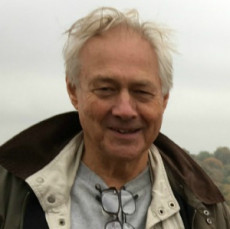Crays Hill, Essex, UK, February 1, 2008: Perhaps Dale Farm comes down to this: 500 newcomers could easily be absorbed in a city, but their presence is bound to be noticed in the countryside.
Still, Dale Farm is tucked away behind hedges and barely visible, even to their neighbors. Can something be an “eyesore” if there’s no-one around to see it?
Dale Farm lies on “Green Belt,” a huge strip of land around London that was declared protected from development in the 1960s in an effort to slow urban sprawl. But “Green Belt” implies more than a zoning regulation. It conjures up sweeping fields and hedgerows. “Dale Farm” sounds positively bucolic.
Maybe the farm was nicely green at some stage but in the 1990s the owner began to turn part of it into a dumping ground for used cars, with the full permission of the local council.
Richard Sheridan, one of the Traveller leaders, shows us aerial photos of hundreds of rusting carcasses that were taken at the time. That must have been a real eyesore. Richard and the other “illegals” have done everyone a favor by cleaning it up.
Back in the 1990s, the owner of Dale Farm also began to sell off farmland to Traveller families, who re-sold plots to other Traveller families. He had plenty of takers because a law in 1994 removed the duty on local councils to find land for Travellers, forcing the Travellers to find land for themselves. Eventually 42 families moved in to Dale Farm and were given planning permission at what is now the lower end of the site.
These “legal” bungalows and caravans are as neat and tidy as any suburban neighborhood. The other “illegal” part of the site is strewn with the garbage – at least in the public spaces. But then as Richard Sheridan observes, it’s hard to have a sense of civic pride when you’re facing eviction.
All in all, I find this Green Belt argument pretty cynical. There’s a strong argument for protecting against urban sprawl, but it should not be used as a ploy to get rid of an unpopular minority.
I think back to 2006, when Grattan and I visited the Traveller houses that had been bulldozed at the nearby village of Hove Fields. Instead of cleaning them up, the council had left them to fester as stinking open pits.
These were clearly hazardous to the children who play in them and – of course – to the environment. So much for the Green Belt.
Posted By Iain Guest
Posted Feb 1st, 2008

